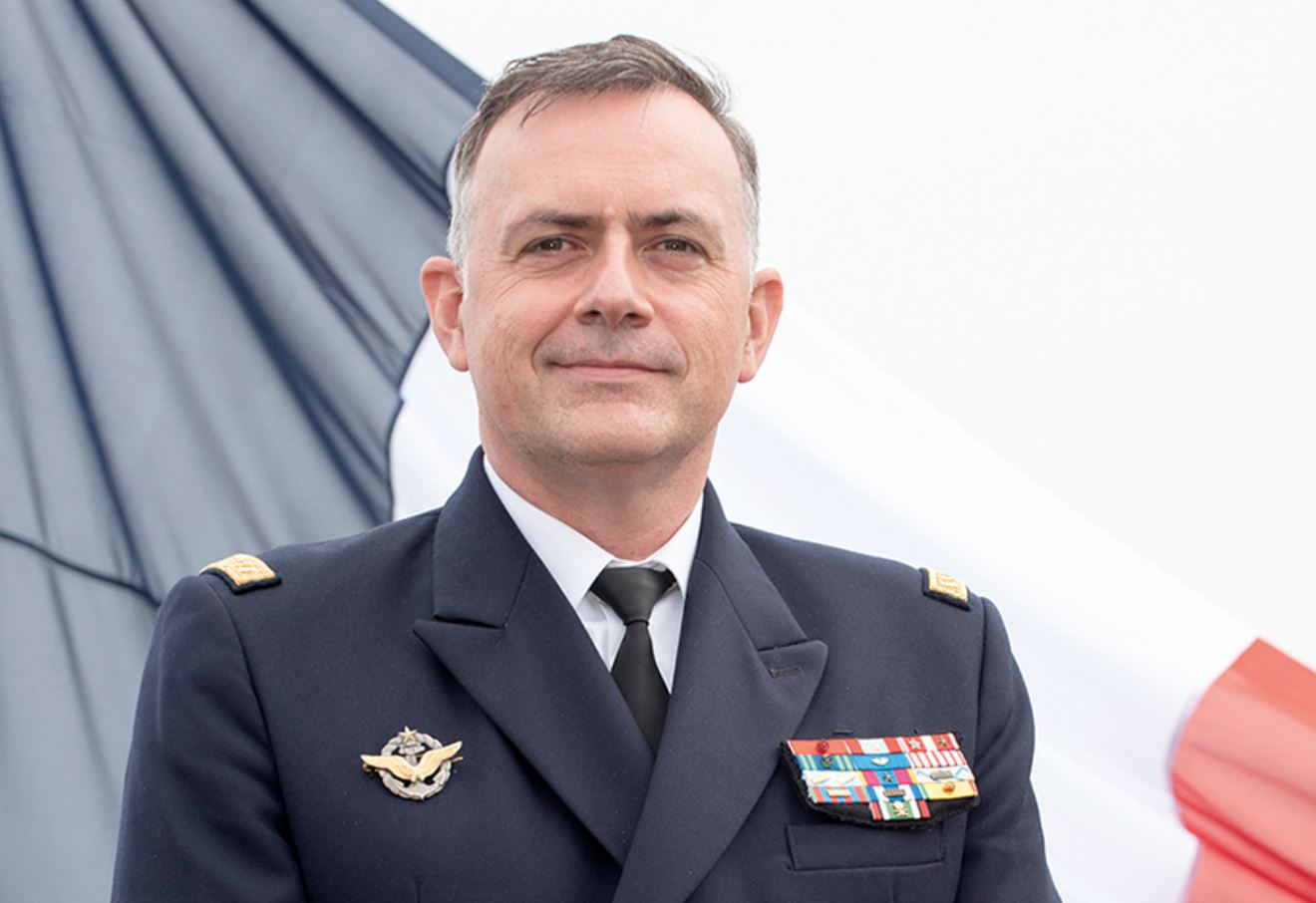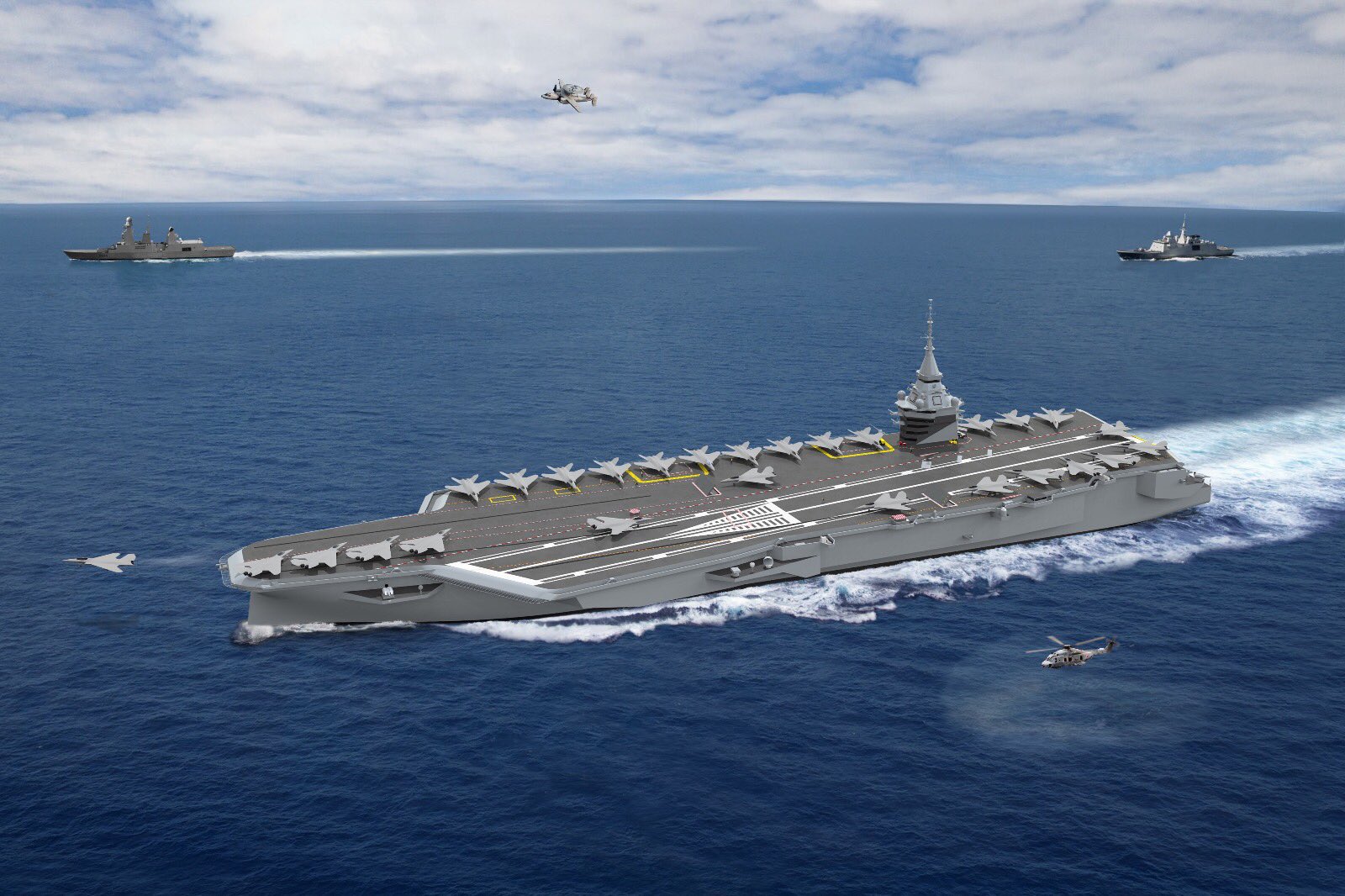
This post has been updated to correct the planned tonnage of France’s new carrier. The carrier is planned to be 80,000 tons.
The French Navy is only now starting to recover from 30 years of deep budget cuts that saw its fleet size halved, its senior admiral said Monday.
Adm. Pierre Vandier, chief of the French Navy since September 2020, said, it “now lacks certain naval assets [going into] the future” despite operational demands that it remains a global force.
Even with an uptick in defense spending, he added, “gaps will not be filled until 2029.” Vandier said that the 20-year plan for the French navy’s modernization runs the gamut from nuclear deterrence with a new 80,000-ton carrier and nuclear submarines to aircraft to support and patrol ships.
To achieve that across-the-board modernization requires a long-term “high-level of investment” to keep pace with competitors’ technological advances and that will require choices, he said during a Center for Strategic and International Studies online forum.
In September, France committed to a 2022 annual defense budget of $48 billion in 2022 — an almost $2 billion increase from 2021, reported Jane’s.
These decisions, included in a French defense white paper to modernize, “were shaped by competition for the global commons.” Vandier defined the commons as maritime, cyberspace and space. “The oceans are closely linked to cyberspace” through the undersea cables transmitting massive amounts of data and space critically important for a navy’s communications and navigation, he said.
“We are in a new arms race” in high technology, Vandier said. He said there is an increasing need among allies to become more interoperable in their military operations. Adding that interoperability was more easily done in the framework of an alliance like NATO but was equally important in the Indo-Pacific.
This competition among great powers in the three commons “gives rise to great risks,” he said. The commons also have become new arenas for gray zone activities – from cyber attacks to disrupting communications to illegal fishing and arms smuggling.
Vandier said in this new year’s meeting with senior naval officers he stressed the need for the service to be ready for “high-end conflict” from the Atlantic into the Indo-Pacific where 1.6 million French citizens live. His guidance to the French fleet shortly after he assumed command in many ways paralleled that of Chief of Naval Operations Adm. Mike Gilday, he said.
“The challenges are huge,” Vandier said.

“NATO is the first engagement” for the French navy in meeting its global commitments. Related to the rising tensions over Moscow’s demands on not expanding the alliance and Ukraine’s future, he noted the increased presence of Russian submarines and surface combatants in the Black Sea and the Mediterranean and the deployment of S-400 air defense systems.
In response, Vandier said the French “go into the Black Sea on a regular basis,” four or five times a year and has also participated with Turkey in naval exercises there. He said these deployments were “a way to say we’re alongside NATO” and also to re-assure Ukraine.
Vandier added around Ukraine “much of the [Russian] activity is ashore” with the positioning of 100,000 troops along the border and new military exercises in Belarus. In the Black Sea itself, he reported a “normal pattern of life” with the Russian fleet, based at Sebastopol in Crimea.
The United States is watching the increased Russian naval presence in the Mediterranean, said Pentagon Press Secretary John Kirby during a Monday briefing. The movement so far is not considered threatening, although he would not give specific details on Russian naval activity.
NATO has assumed command of the Harry S. Truman Carrier Strike Group, which is the first time it has commanded a U.S. strike group since the Cold War.
It is rare for NATO to assume command of a strike group, Kirby said, and it is meant to send a signal of the U.S. commitment to the NATO alliance.
“I would hope that the message sto be taken away from this is that NATO is a strong alliance, it is unified and the American commitment to the NATO alliance is ironclad,” Kirby said.
In the Indo-Pacific, Vandier said the French are introducing a new class of patrol boats to monitor maritime activities and plan to introduce more patrol aircraft to its possessions there in 2025. Paris is also updating satellite links to the region to better identify “where activity is abnormal.”
He also noted the extended presence of its aircraft carrier strike group in the Indo-Pacific last year as a demonstration of the French navy’s global reach and readiness after decades of budget turmoil.
USNI News reporter Heather Mongilio contributed to this report.





